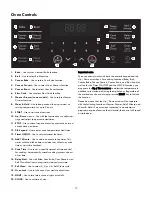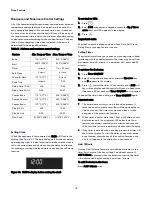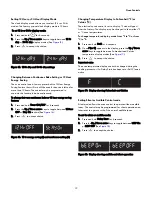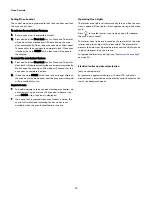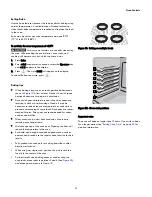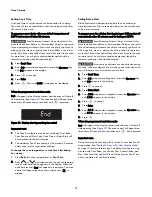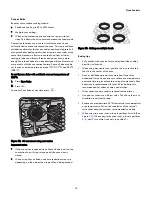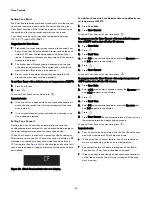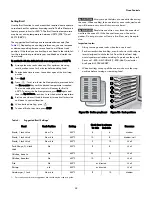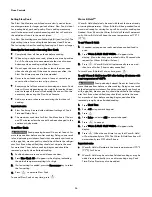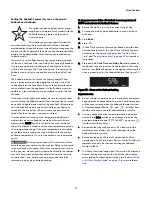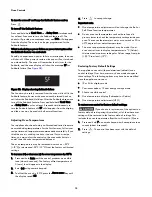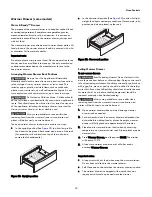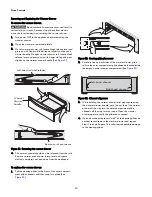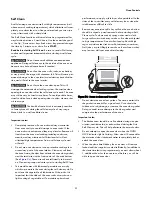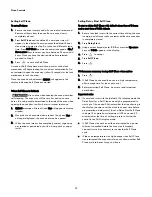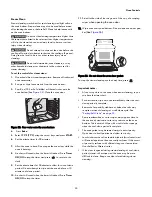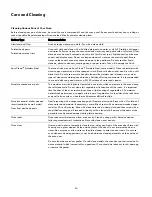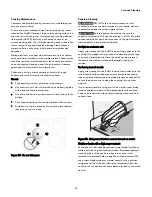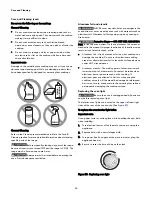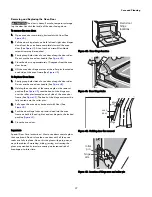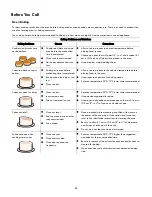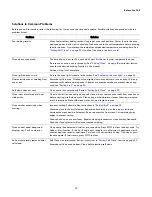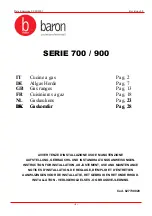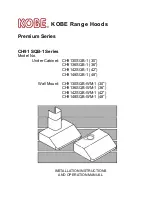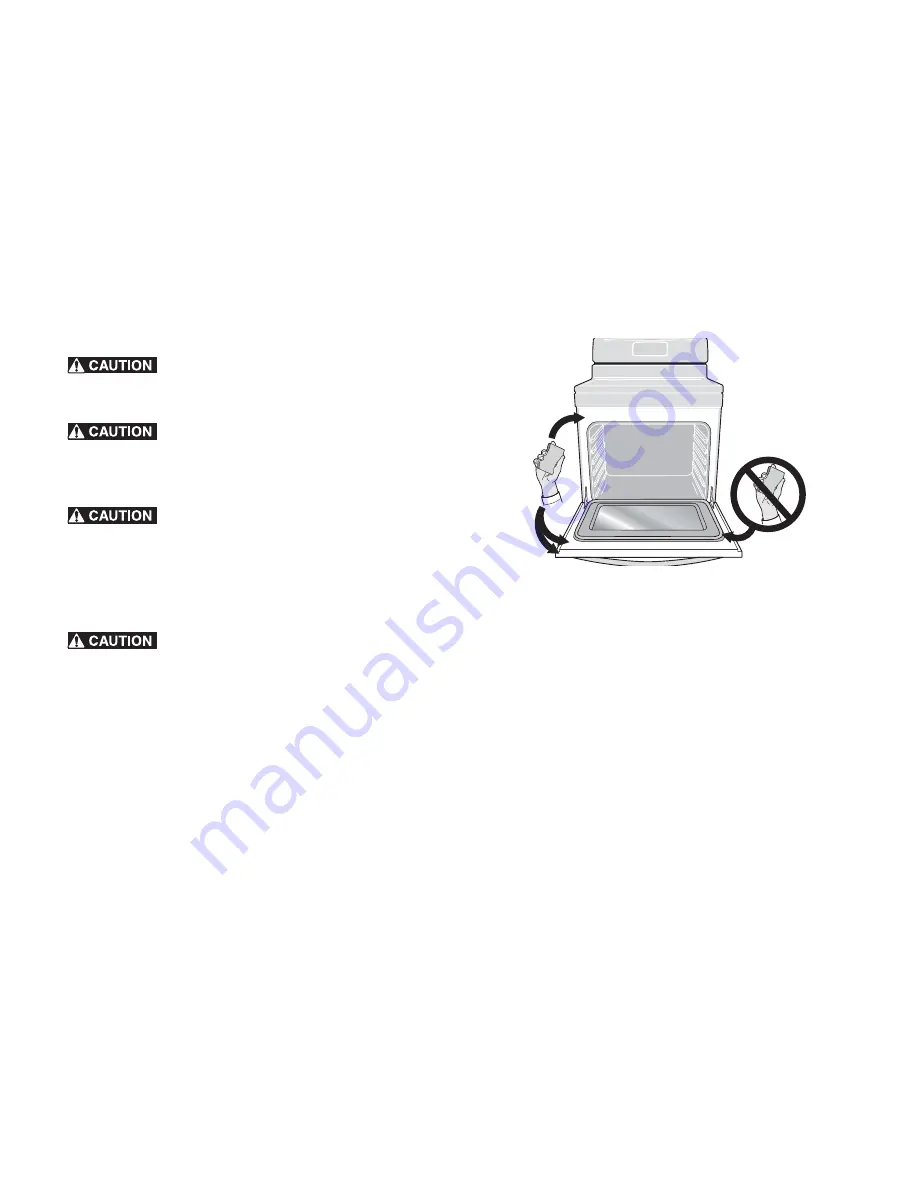
31
Oven Controls
Self Clean
A self cleaning oven cleans itself with high temperatures (well
above normal cooking temperatures), which eliminate soils com-
pletely or reduces them to a fine powdered ash you can wipe
away afterwards with a damp cloth.
The Self Clean function on this model can be programmed for
any duration between 2 and 4 hours. Use the numeric keypad
or the Up / Down arrow keys. Each arrow key pressed changes
the time by 1 minute up or down. Press
START.
Read before starting Self Clean
. Be sure to read all following
caution and important statements before starting a self clean
cycle.
Do not leave small children unattended near
appliance. During self clean cycle, the outside of the oven can
become very hot and cause burns if touched.
Do not line the oven walls, racks, oven bottom,
or any part of the range with aluminum foil. This will cause per-
manent damage to the oven interior and destroy heat distribu-
tion, and will met to the oven interior.
Do not force the oven door open. This will
damage the automatic door locking system. Use caution when
opening the oven door after the self clean cycle ends. The oven
may still be very hot and cause burns. To avoid possible burns,
stand to side of oven when opening door to allow steam or hot
air to escape.
The health of some birds is extremely sensitive
to fumes given off during the self clean cycle of any range.
Move birds to a well ventilated room.
Important notes:
•
Completely remove all oven racks and any accessories
from oven cavity
to avoid damage to oven racks. If the
oven racks are not removed they may discolor. Remove all
items from the oven and cooktop including cookware,
utensils, and any aluminum foil. Aluminum foil will not
withstand high temperatures from a self clean cycle and
will melt.
•
Do not use oven cleaners or oven protective coatings in or
around any part of the oven interior. Clean any soil from
the oven frame, the door liner outside the oven door gasket,
and the small area at the front center of the oven bottom
(See
Figure 34
). These areas heat sufficiently to burn soil
on. Clean using soap and water prior to starting Self Clean.
•
This model comes with lubricated porcelain oven racks,
which can remain in the oven during the self-clean cycle. Do
not clean this vegetable oil lubrication off the racks. It is
important that the sides of the oven racks always have a
light coating of vegetable oil. To maintain optimal rack
performance, re-apply a thin layer of vegetable oil to the
sides of the rack after every self-clean cycle or when the
rack becomes difficult to slide.
•
Remove any excessive spills. Any spills on the oven bottom
should be wiped up and removed before starting a Self
Clean cycle. To clean use hot, soapy water and a cloth.
Large spills can cause heavy smoke or fire when subjected
to high temperatures. Do not allow food spills with high
sugar or acid content (such as milk, tomatoes, sauerkraut,
fruit juices, or pie fillings) to remain on the surface as they
may leave a dull spot even after cleaning.
•
Do not clean the oven door gasket. The woven material in
the gasket is essential for a good seal. Care should be
taken not to rub, damage, or remove the oven door gasket.
Doing so could cause damage to the door gasket and
compromise the performance of the oven.
Important notes:
•
The kitchen area should be well ventilated using an open
window, ventilation fan, or exhaust hood during the first
Self Clean cycle. This will help eliminate the normal odors.
•
Do not attempt to open the oven door when the OVEN
LOCK indicator light is flashing. Allow about 15 seconds for
the motorized door latch mechanism to completely lock or
unlock the oven door.
•
When the clean time finishes, the oven door will remain
locked until the range has cooled sufficiently. In addition to
the clean time that was programmed, you must allow about
1 additional hour for the oven to cool before you will be
able to open the oven door.
Figure 34: Areas to clean and to avoid

